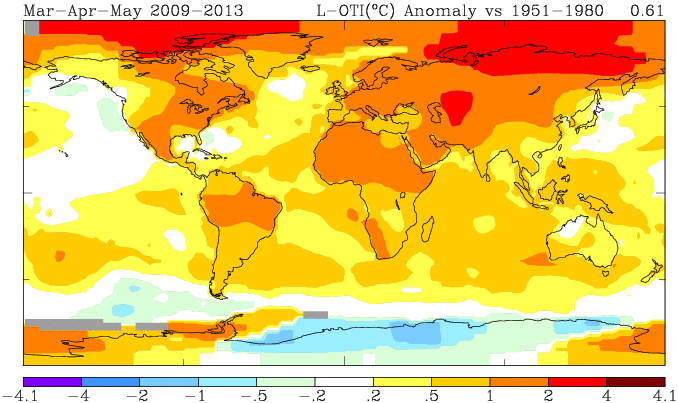
The Arctic is the region of the Earth where the strongest temperature rise has been observed.
It is therefore an ideal and important region where the computational models that predict global
climate change can be checked against reality. It is our intention to contribute to a better
understanding of some of the processes involved in the temperature change in the Arctic. For
this purpose, we will conduct airborne measurements in the Canadian Arctic in April and May
2012.

One of the reasons why the Arctic is so sensitive to climate change is the albedo effect.
The surface in the Arctic is usually dark: sparsely vegetated soil, or the depths of the
Arctic Ocean. However, the areas covered by snow and ice are very bright. Dark surfaces
absorb a large fraction of the incoming solar energy, while bright surfaces reflect most
of it back up into the atmosphere. Therefore, dark areas heat up more than bright areas
when the Sun shines on them. So if a piece of ice melts and gives way to the underlying
dark surface (soil or water), local heating occurs and more ice will melt. This is a positive
feedback mechanism because the melting process is self-amplifying.
The amount of solar energy that reaches the surface is mostly controlled by two things:
time and clouds. Time is crucial in the Arctic because in winter the Sun does not rise at
all for months, while in summer there is no night. Also the high Sun around noon transports
much more energy into a square meter of surface than a low Sun near the horizon.
In the Arctic, clouds (in particular, boundary-layer clouds) are of special importance in
the predictions of Arctic climate warming. On an annual average, the act similar to greenhouse
gases: they keep thermal infrared radiation from escaping into space. This effect exceeds the
cooling due to the reflection of incoming solar radiation by these clouds. In detail, this
radiative effect is highly variable and depends on the surface albedo, aerosol properties,
and cloud properties such as water content, cloud-droplet or ice-crystal size, and the
thermodynamic phase (ice vs liquid water). Additionally, the long periods of permanent
polar day and polar night have a strong impact on the competition between solar and
terrestrial radiative effects. For example, the low surface albedo in summer (the dark ocean
surface, instead of the bright ice) leads to a seasonal cooling effect of Arctic clouds.
The Earth's total energy budget is defined by the incoming and outgoing solar and the
outgoing terrestrial (or thermal infrared) radiation. Solar radiation has wavelengths
between 0.3 and 4 micrometers (one micrometer is one millionth of a meter, or one thousandth
of a millimeter). Terrestrial radiation has wavelengths between 4 and 100 micrometers. Both
are modified by scattering, absorption, and emission by atmospheric particles (including cloud
droplets), but also by the Earth's surface. The energy budget of the Arctic differs
significantly from that of the entire Earth's global and annual average. The Arctic areas are
a major sink in the Earth's energy budget, especially because they receive so little solar energy.
The Arctic regions are highly sensitive to changes in the net solar radiation. Two circumstances
increase the impact of atmospheric constituents in the Arctic: the Sun is always low (which
increases the optical path of solar radiation, so there is more interaction with the atmosphere),
and the surface is very bright (high surface albedo due to snow and ice; the reflected radiation
has a second chance to interact with the atmosphere). This results in a high variability of the
Arctic climate, as it has been reported in the Arctic Climate Impact Assessment (published by
Corell, Cambridge University Press, U.K., 2004). Therefore, it is important to measure the
components of the Arctic radiation budget (clouds and aerosols, surface properties, and their
interaction with the radiation field), and to validate ground-based and space borne remote sensing
of Arctic climate parameters, as well as climate models.